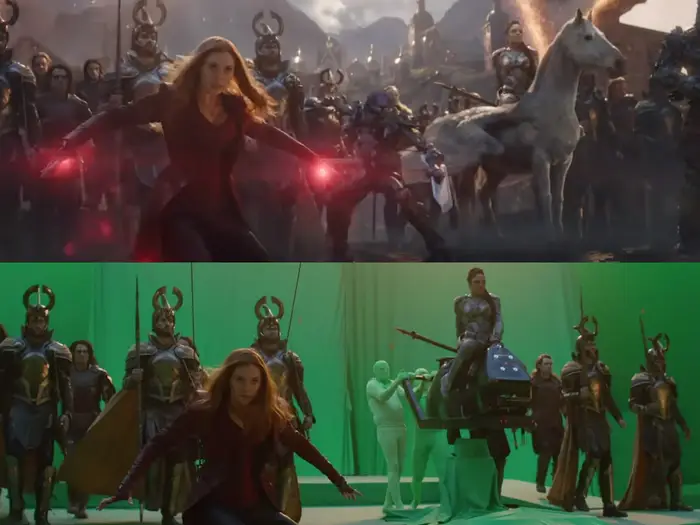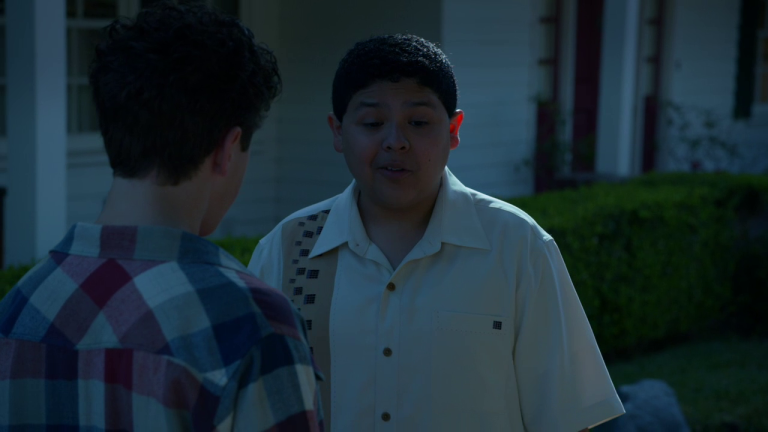Why Green Screen Isn’t Going Anywhere Anytime Soon
Over the past few years, we’ve heard a lot of talk about the “death” of green screen. LED walls, real-time rendering, and AI-assisted compositing have taken center stage, with high-profile productions like The Mandalorian showcasing the power of in-camera VFX.
With the release of Captain America: Brave New World, I’ve also seen a lot of discussion around why “Marvel green screen has gotten so bad”

These days, even a half-savvy public can spot a green screen a mile away. So what’s happening here? Are VFX artists getting worse at chroma keying, as the technology dies out?
Nope. But there is a huge issue with using chroma screens on a large scale (for example, a green screen studio), which is that the lighting in that studio is generally so different to whatever the final shot is going to be, that you just can’t get them to meet.

You can work around this problem to a degree, with virtual production techniques, like creating an Unreal scene of the final result, and working with the DoP to create a plan to light the set as close as possible to the end result.
The problem is that on most productions, there’s no time to do that.
LED volumes are magic because they reverse this process, using the CG generated environment to light the actors. Except then you have to create your CG before you even film, and there’s no time to do that, either! I’ve already worked on a couple of shows that have been shot in LED volumes, and then the LED screens have been replaced by more CG in post.
What this all points to is that green screen is certainly not obsolete. The reason why modern films don’t look as good from an FX point of view has nothing to do with chrome, LED volumes, or AI. It’s just that everything’s being sprinted through with no planning time.
Despite the hype, green screen remains one of the most versatile and widely used tools in VFX. While LED walls are incredible for controlled environments, they come with limitations: cost (you can build your own from home if you have a cool million or so in the bank and an extra bedroom), space requirements, and a steep learning curve. Meanwhile, green screen still offers unmatched flexibility, allowing filmmakers to shoot anywhere and composite later without being locked into pre-rendered backgrounds.
If you understand how to chroma key and what its limitations are, you’ll be able to get great results by planning your shoots with that in mind. And you can get some green cloth for the price of a coffee, so budget isn’t an issue like it is with LED volumes.
For most of us doing our own work, green screen is the present and the future, but on a larger budget, LED screens can be amazing. Here’s a run down of the pros and cons:
Green Screen vs. LED Volumes: Pros & Cons
Green Screen:
✅ Lower cost and more accessible
✅ Allows for post-production flexibility
✅ Works in a variety of environments
❌ Can require extensive lighting adjustments
❌ May result in spill issues that need post-processing
LED Volume:
✅ Provides realistic in-camera lighting and reflections
✅ Helps actors interact with real-time environments
✅ Reduces post-production compositing work
❌ High upfront costs and space requirements
❌ “Front loads” the work—pre-production builds must be completed before shooting
❌ Less flexibility for changing backgrounds in post
❌ Can still function as a green screen, requiring traditional compositing in some cases
The reality? Green screen isn’t going anywhere any time soon. Technology eventually will replace the “keying” part of the process, and render green screen redundant, and AI will probably be able to drop in backgrounds fairly easily. But as always the key parts of the process – the planning, the understanding of the process, understanding light, understanding how to composite, understanding how to work out the right tool for the right job, all of this is going to be incredibly useful for a long time to come.
What’s your take? Have you started using virtual production, or are you sticking with tried-and-true green screen techniques?
Let me know, and I’ll see you next week!
Chris
